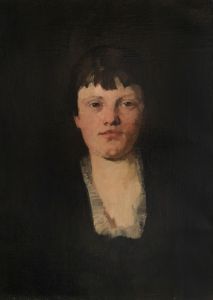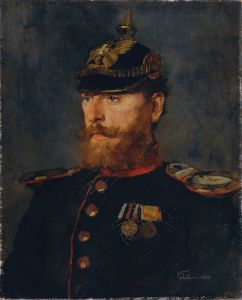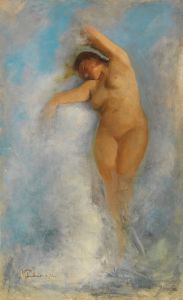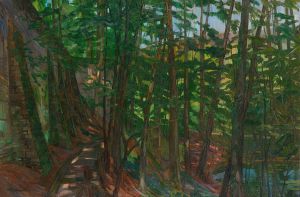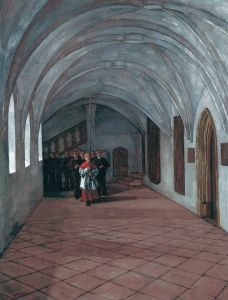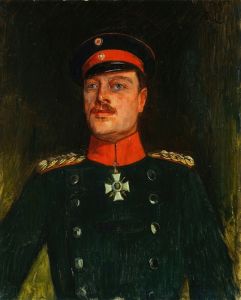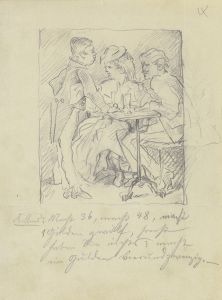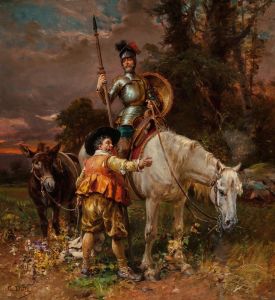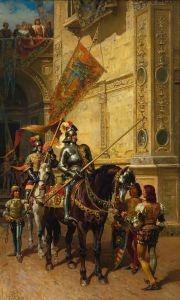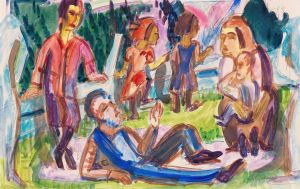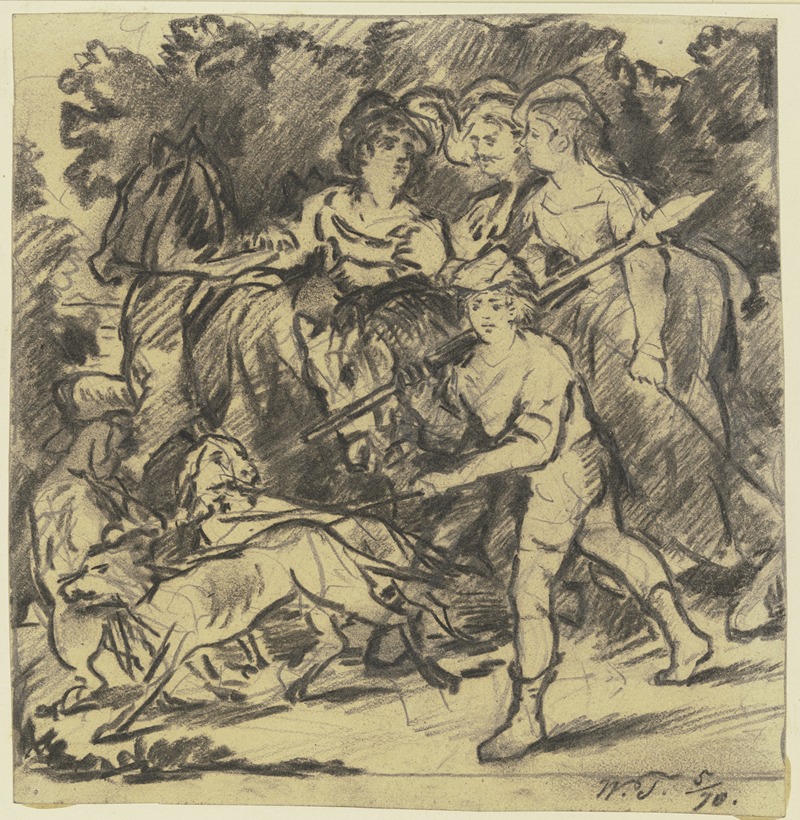
Zwei Edelfräulein und ein Knappe reiten auf die Jagd, dabei Bursche und Rüden
A hand-painted replica of Wilhelm Trübner’s masterpiece Zwei Edelfräulein und ein Knappe reiten auf die Jagd, dabei Bursche und Rüden, meticulously crafted by professional artists to capture the true essence of the original. Each piece is created with museum-quality canvas and rare mineral pigments, carefully painted by experienced artists with delicate brushstrokes and rich, layered colors to perfectly recreate the texture of the original artwork. Unlike machine-printed reproductions, this hand-painted version brings the painting to life, infused with the artist’s emotions and skill in every stroke. Whether for personal collection or home decoration, it instantly elevates the artistic atmosphere of any space.
Wilhelm Trübner was a prominent German painter associated with the Realist movement, and he is known for his contributions to the development of modern art in Germany during the late 19th and early 20th centuries. One of his notable works is "Zwei Edelfräulein und ein Knappe reiten auf die Jagd, dabei Bursche und Rüden," which translates to "Two Noble Ladies and a Squire Ride to the Hunt, Accompanied by a Boy and Hounds."
Trübner was born on February 3, 1851, in Heidelberg, Germany. He initially studied under the guidance of the painter Hans Canon in Vienna and later at the Academy of Fine Arts in Karlsruhe. His artistic journey led him to Munich, where he became associated with the Munich Secession, a group of artists who sought to break away from the traditional academic art styles of the time. Trübner's work is characterized by his keen observation of nature and his ability to capture the essence of his subjects with a realistic yet expressive style.
"Zwei Edelfräulein und ein Knappe reiten auf die Jagd, dabei Bursche und Rüden" exemplifies Trübner's skill in depicting scenes of everyday life with a focus on detail and composition. The painting portrays a hunting scene, a popular subject in European art, particularly among the nobility and upper classes who often participated in such activities. In this work, Trübner captures the dynamic movement of the riders and their entourage as they embark on a hunt, a theme that reflects both the leisure pursuits and the social structures of the time.
The painting is notable for its use of color and light, which Trübner employs to create a sense of depth and atmosphere. The figures are rendered with a sense of realism that highlights Trübner's attention to anatomical accuracy and his ability to convey the textures of clothing and the sheen of the horses' coats. The composition is balanced, with the figures and animals arranged in a way that guides the viewer's eye through the scene, creating a narrative of anticipation and action.
Trübner's work, including this painting, is often associated with the broader Realist movement, which sought to depict subjects truthfully and without idealization. This approach was in contrast to the Romanticism that preceded it, which often emphasized emotion and drama. Trübner's paintings, therefore, provide valuable insights into the cultural and social milieu of his time, capturing moments of everyday life with authenticity and precision.
Throughout his career, Trübner continued to explore various themes and techniques, contributing significantly to the development of modern art in Germany. His works are held in high regard and can be found in several major art collections and museums. Trübner passed away on December 21, 1917, in Karlsruhe, leaving behind a legacy of influential works that continue to be studied and appreciated for their artistic and historical significance.






